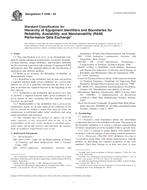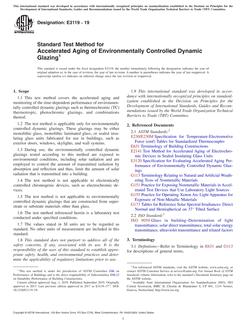1.1 This practice covers a procedure for defining and satisfying the requirements of the user’s/owner’s project.
1.2 A multidisciplinary team uses the procedure to convert design criteria and specifications into descriptions of project functions and then relates these functions to revenues and cost.
1.3 Examples of costs are all revelant costs over a designated study period, including the costs of obtaining funds, designing, purchasing/leasing, constructing/installing, operating, maintaining, repairing, replacing and disposing of the particular building design or system (see Terminology E833). While not the only criteria, cost is an important basis for comparison in a value analysis study of a building. Therefore, accurate and comprehensive cost data is an important element of the analysis.
1.4 This is a procedure to develop alternatives that meet the building’s required functions. Estimate the costs for each alternative. Provide the user/owner with specific, technically accurate alternatives, appropriate to the stage of project development, which can be implemented. The user/owner selects the alternative(s) that best satisfies his needs and requirements.
1.5 Apply this practice to an entire project or to any subsystem. The user/owner can utilize the VA procedure to select the element or scope of the project to be studied.
Product Details
- Published:
- 10/01/2005
- Number of Pages:
- 6
- File Size:
- 1 file , 100 KB
- Redline File Size:
- 2 files , 190 KB


